

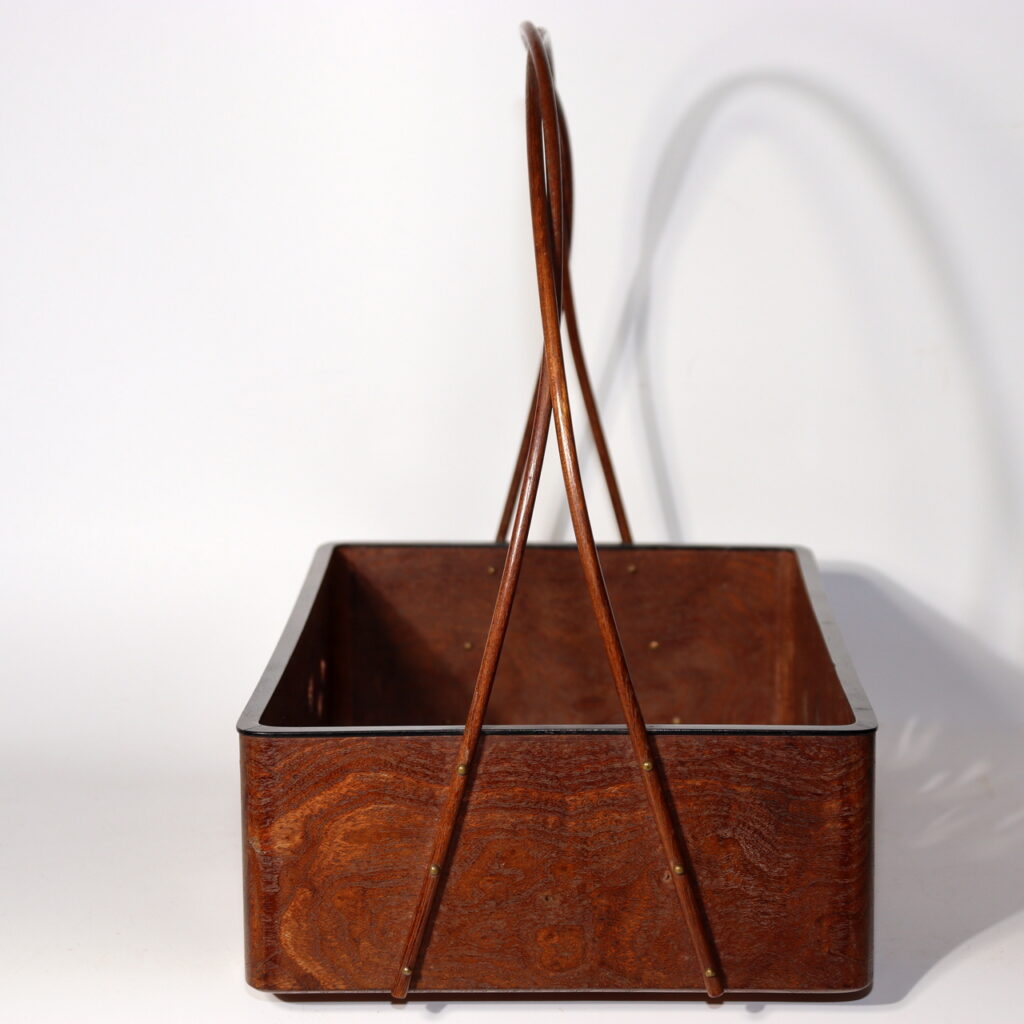
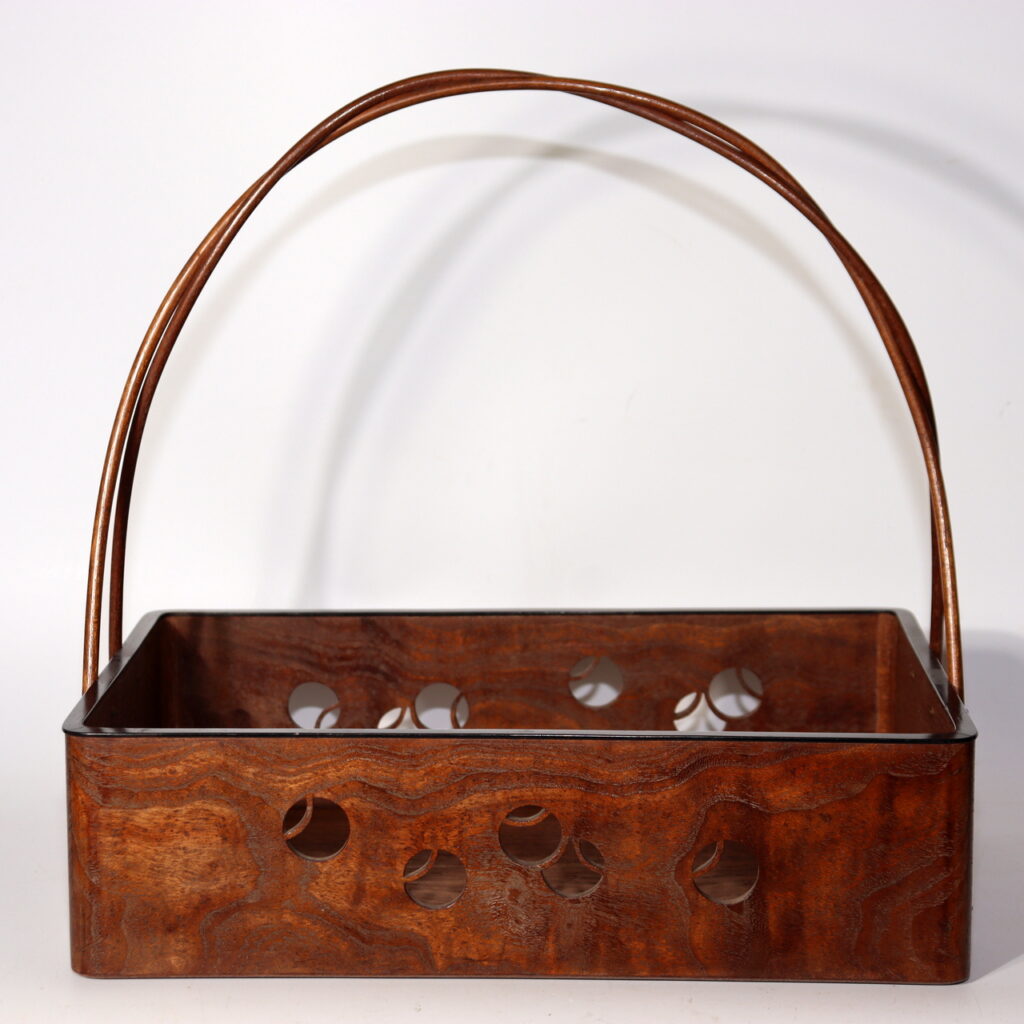
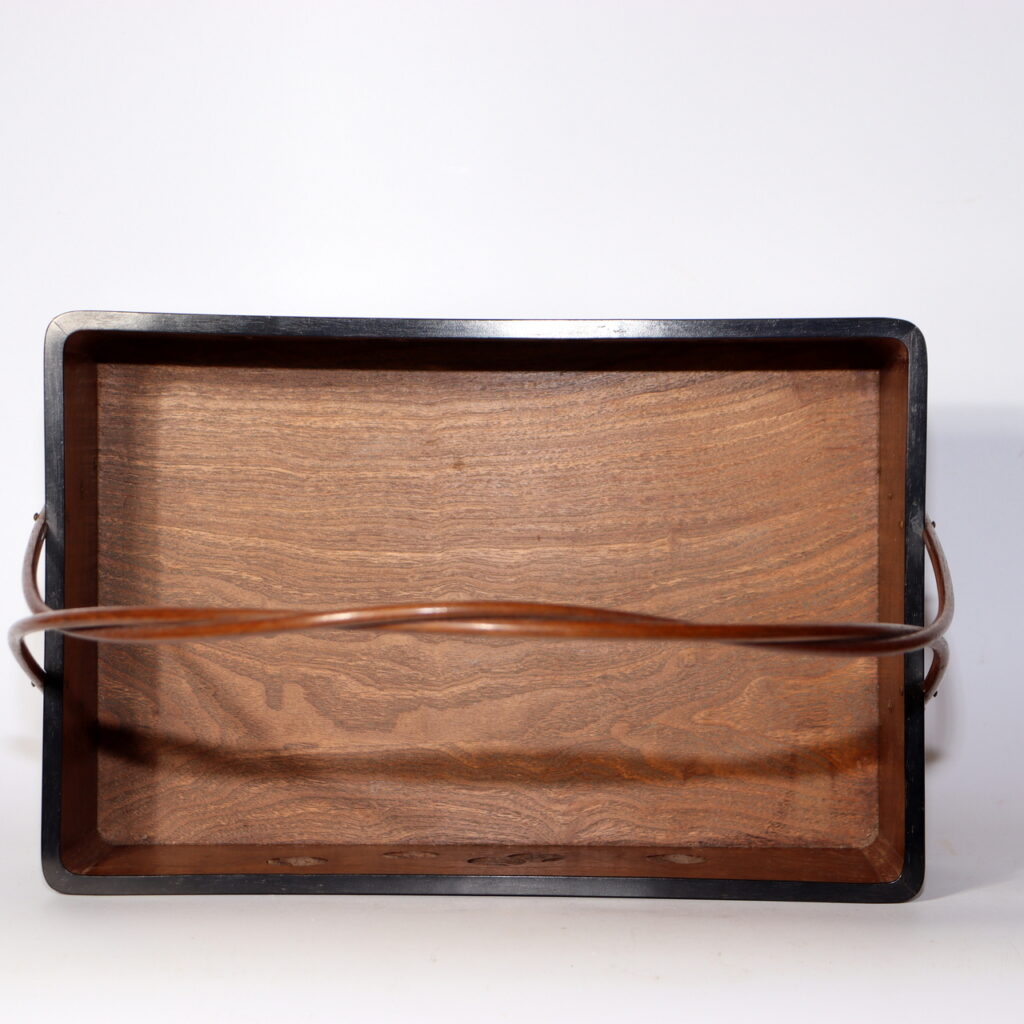

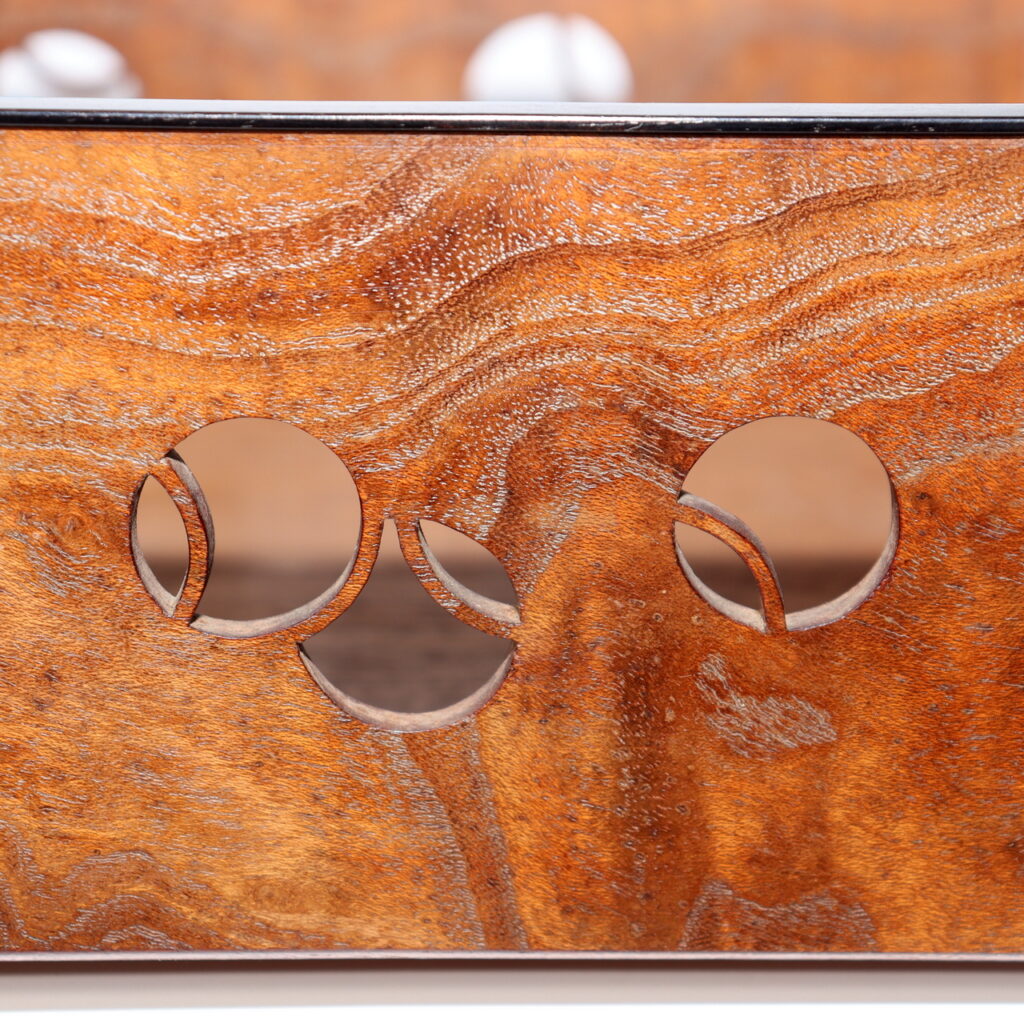
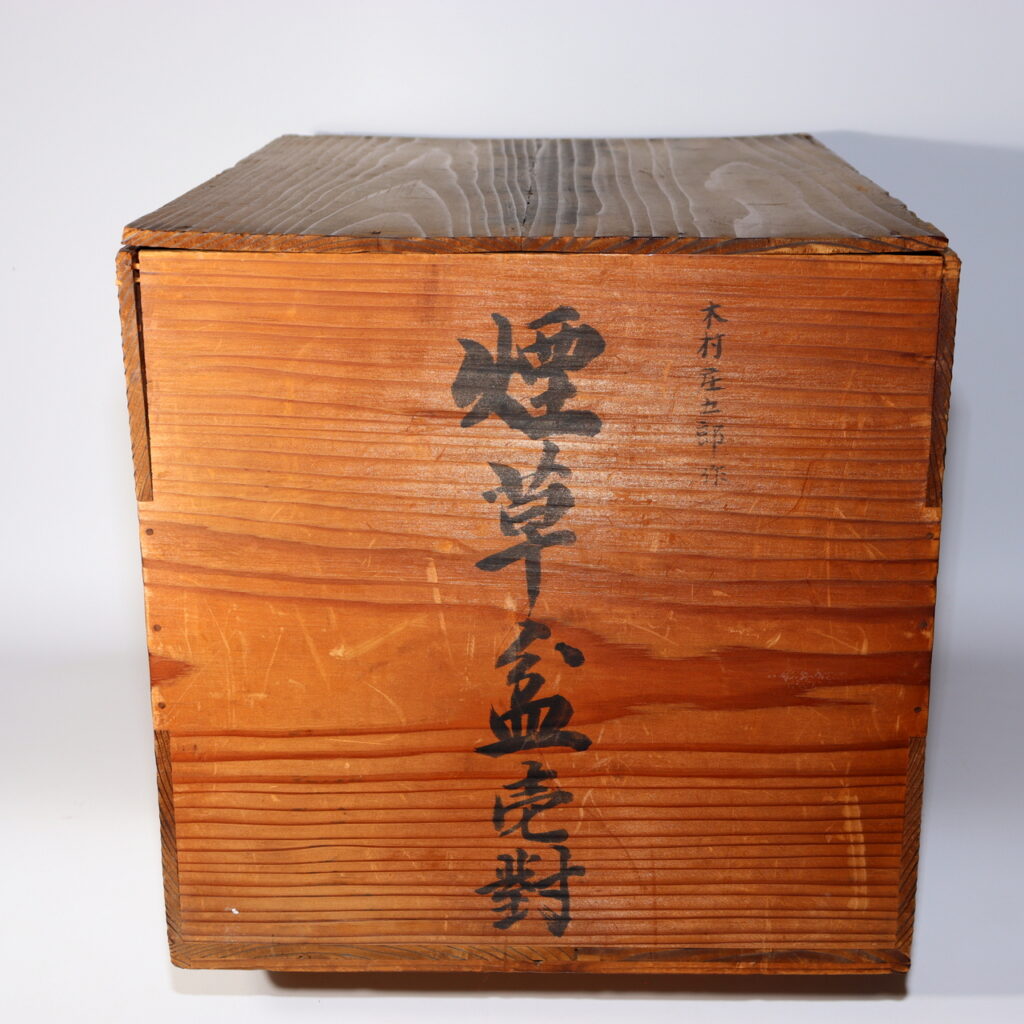
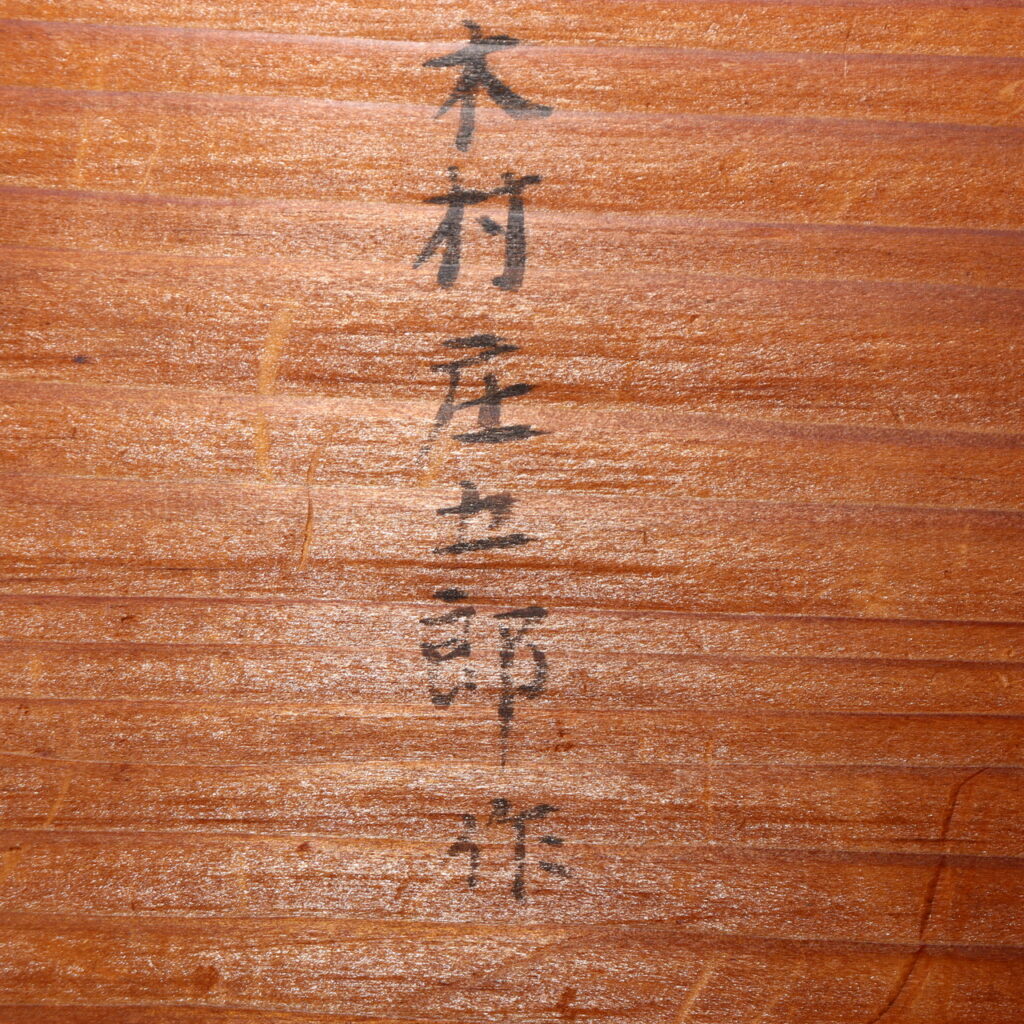
Some objects carry the quiet dignity of mastery—crafted not for display, but for graceful daily use. This Japanese antique wooden tobacco tray, created by master joiner Kimura Shogoro during the Meiji period (1868–1912), is one such item. Though originally designed to hold tobacco and small personal items, its elegant form now lends itself beautifully to modern interiors as a floral stand or display accent.
The Story Behind This Piece
In Meiji-era Japan, sashimono (指物) joinery represented the highest level of carpentry—eschewing nails or metal fasteners, it relied solely on precise wooden joints, grain alignment, and craftsmanship passed down through generations.
This tray, inscribed with the character for tobacco (煙草) and housed in its original wooden box, was likely used by an individual of refined taste. Kimura Shogoro, the craftsman behind this piece, was celebrated for his skill in crafting compact yet expressive forms—every drawer, panel, and corner shaped with mindfulness and purpose.
What once held pipe tools or tobacco sachets now welcomes a kenzan (flower frog) and seasonal blooms—carrying tradition into modernity with poetic elegance.
Highlights and Features
- Masterful Joinery: Built using traditional Japanese woodworking techniques, the tray features no nails or screws. Every joint is carefully cut and fitted—visible proof of a high-level sashimono artisan.
- Natural Materials: Crafted from richly grained hardwood with a warm, aged patina, the tray invites both visual and tactile appreciation.
- Multi-Tiered Functionality: The piece includes a top display tray, ideal for placing flower arrangements, and two drawers beneath for storage—perfect for incense, tea tools, or personal effects.
- Floral Arrangement Use: As demonstrated in the photo, placing a shallow water container with a kenzan inside transforms this tray into a modern ikebana base. The wood’s understated beauty complements floral colors without distraction.
- Original Box and Inscription: The inclusion of its original wooden box, inscribed with “tobacco,” provides provenance and enhances its historical value.
This transformation from a personal tool to a piece of interior design reflects the enduring nature of Japanese antiques—form, function, and philosophy intertwined.
Why Collectors and Designers Treasure It
For collectors of Meiji-era Japanese antiques, this piece offers both authenticity and versatility. For designers and homeowners, it serves as an elegant blend of tradition and modern usability.
It’s ideal for:
- Tea ceremony practitioners seeking tasteful accessory storage
- Interior designers focused on wabi-sabi or Japandi aesthetics
- Collectors of Japanese woodworking or functional antiques
- Use in flower arrangement spaces, meditation rooms, or display alcoves
Its portability and visual harmony make it suitable for both classical Japanese rooms and contemporary minimalist interiors.
Conclusion: Quiet Craftsmanship with Modern Life in Mind
This tobacco tray by Kimura Shogoro reminds us that beauty often lies in quiet utility. It is a testament to how the Meiji-era commitment to craftsmanship still resonates today—not as nostalgia, but as inspiration. Whether it holds flowers or memories, this piece invites us to slow down and appreciate what is both well-made and well-lived.
If this item is already sold, you can explore similar finely crafted antiques in our collection:
🔗 Browse our full collection